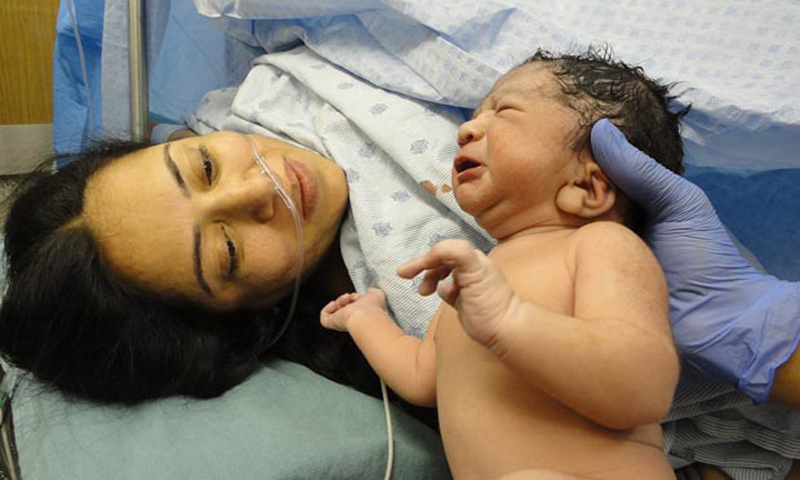While debates about financial inequality generally focus on individual earnings and wealth, a new study suggests the value of public health insurance should be considered when examining the distribution of income in the United States.
The issue: Public officials and policymakers are continually debating ways to reduce income inequality, or the uneven distribution of income across the U.S. population. A 2017 report from the Congressional Budget Office indicates the richest 10 percent of families hold the vast majority of the wealth and that the distribution of wealth grew more unequal between 1989 and 2013.
Over the past decade, scholars have published dozens of studies exploring the causes and consequences of income inequality. Some of that research has examined government programs to determine whether and how much they help narrow the income gap between the rich and the poor. A new study focuses on public health insurance.
An academic study worth reading: “Health Insurance and Income Inequality,” published in the Journal of Economic Perspectives, 2016.
Study summary: Robert Kaestner and Darren Lubotsky, economics professors at the University of Illinois at Chicago, sought to understand how government programs targeting health insurance affect income inequality. They consider Medicaid and Medicare, public insurance programs that primarily serve the poor and elderly. The two scholars look at how adding the value of Medicaid and Medicare to the personal incomes of the people who benefit from them affects the distribution of income nationally.
Kaestner and Lubotsky also examine whether the distribution of income changes if the value of employer-provided health insurance is added to personal incomes. In addition, they look at how taxing employer-provided health insurance as income may also influence personal income levels.
For their study, the researchers analyzed data on family income in 1995, 2004 and 2012 from the Current Population Survey, sponsored by the U.S. Census Bureau and U.S. Bureau of Labor Statistics. They use data from other sources, including the Medical Expenditure Panel Survey, a set of large-scale surveys on health care and health insurance coverage from the federal Agency for Healthcare Research and Quality.
To gauge how much health insurance affects income inequality, the researchers investigate changes in the so-called “90-10 ratio” – or the ratio of individuals earning a family income that falls into the 90th percentile nationally to individuals earning a family income that falls into the 10th percentile. A smaller ratio indicates a narrower gap between the highest and lowest incomes.
Among the key findings:
- While adding the value of Medicare and Medicaid to family income does not actually put more money into the pockets of the poor and elderly, it does change overall income calculations, resulting in a lower 90-10 ratio. An analysis of data from 2012 suggests that including the value of Medicare and Medicaid reduces the ratio by approximately 30 percent.
- Adding the value of employer-provided insurance to personal income increases the 90-10 ratio — on paper. That increase suggests a wider gap between the poor and the wealthy and a higher level of income inequality.
- Taxing employer-provided health insurance as income slightly reduces the 90-10 ratio. An analysis of data from 2012 indicates the ratio is reduced by about 4 percent.
- The findings suggest that “adjusting for public and private health insurance has a considerable effect on inequality at a point in time. Incorporating Medicare and Medicaid tends to flatten the distribution of income because the benefits of Medicaid, and to a lesser extent Medicare, accrue largely to those at the bottom of the resource distribution. Moreover, these programs have lessened the growth in inequality over time.”
Other resources for journalists:
- The U.S. Centers for Medicare & Medicaid Services publishes a variety of reports on health expenditures broken down by age, gender and other factors.
- The Congressional Budget Office regularly analyzes the distribution of income. A 2016 report finds that “households in the top, middle, and bottom income quintiles received 53, 14, and 5 percent, respectively, of the nation’s before-tax income and paid 69, 9, and 1 percent, respectively, of federal taxes.”
- A 2016 report from the National Center for Health Statistics, “Health Insurance Coverage: Early Release of Estimates From the National Health Interview Survey, 2015,” analyzes trends in insurance coverage by age and income level.
- The federal government website, HealthData.gov, offers thousands of data sets on health topics such as infant birth weights, flu shots, hazardous materials and cancer treatment.
- The Healthcare Cost and Utilization Project is a set of free databases and software tools sponsored by the U.S. Agency for Healthcare Research and Quality. Databases that are available include the National (Nationwide) Inpatient Sample (data on hospital stays) and the Nationwide Emergency Department Sample (data on emergency room visits).
Related research:
- A 2017 study published in Health Affairs, “Health Care Use And Spending Patterns Vary By Wage Level In Employer-Sponsored Plans,” suggests employees earning the lowest wages have more emergency room visits and are less likely to use preventive care services than top wage earners.
- A 2016 study in the Journal of Health Economics, “Including Health Insurance in Poverty Measurement: The Impact of Massachusetts Health Reform on Poverty,” finds that “public health insurance benefits and premium subsidies accounted for a substantial, one-third reduction in the health inclusive poverty rate.”
- Journalist’s Resource has featured research that explores the links between labor unions and income inequality, social class and income inequality and child abuse and income inequality.


Expert Commentary